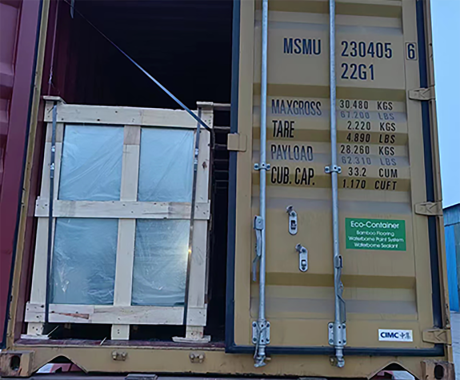

The Art and Science of Tempered Glass Design
Tempered glass, also known as toughened glass, has become an essential material in modern architecture and interior design. Its unique properties not only enhance the aesthetics of buildings and spaces but also provide essential safety and structural integrity. Understanding the design principles behind tempered glass can significantly impact various applications, from facades to furniture.
What is Tempered Glass?
Tempered glass is manufactured through a process of extreme heating and rapid cooling that makes it much stronger than regular glass. This treatment endows the glass with a high level of resistance to mechanical stress and thermal fluctuations. When broken, tempered glass shatters into small, blunt pieces rather than sharp shards, significantly reducing the risk of injury. Its robustness makes it ideal for various applications, including windows, shower doors, and glass doors.
Design Considerations
One of the critical aspects of tempered glass design is understanding its thermal properties. Glass should be chosen and treated based on the environment where it will be installed. For instance, large glass panels exposed to direct sunlight may experience significant temperature variations, leading to thermal stress. Designers must consider the size, thickness, and treatment of glass to ensure it can withstand these conditions.
Another important factor is the aesthetic aspect. Tempered glass provides transparency and allows natural light to enter spaces, promoting a sense of openness and connectivity with the outdoors. The design can be enhanced by using frosted, tinted, or patterned glass, offering creative possibilities while maintaining safety standards. Architects and designers often explore innovative shapes and applications, such as curved glass facades or intricate glass partitions, to create visually striking environments.
Safety and Compliance

Safety is paramount in tempered glass design. Architects must adhere to local building codes and safety regulations which dictate the use of tempered glass in different applications. For instance, glass used in doors, windows within 18 inches of the floor, and locations subject to impact must be tempered to ensure safety. Meeting these regulations not only protects occupants but also enhances the building’s overall integrity.
Incorporating safety features such as laminated glass can further augment the security of a design. Laminated glass consists of two or more layers of glass bonded with a plastic interlayer, providing additional strength and UV protection. This layering can be particularly useful in high-traffic areas and places where additional security measures are desired.
Sustainability Considerations
In today's design landscape, sustainability plays a crucial role. Tempered glass is inherently energy-efficient, allowing for optimal natural light while minimizing heat loss. Architects can leverage advanced glass technologies, such as low-emissivity (low-e) coatings, which reflect infrared light while allowing visible light to penetrate, enhancing energy efficiency.
Moreover, tempered glass can be recycled, making it a more sustainable choice compared to traditional glass options. When designers consider the lifecycle of materials, tempered glass often presents a viable route toward achieving green building certifications.
Conclusion
The design of tempered glass encapsulates a marriage of functionality and aesthetics. By considering thermal properties, safety regulations, and sustainability, designers and architects can create innovative structures that not only meet the demands of modern living but also inspire beauty and connection. As technology continues to evolve, so will the potential for tempered glass, pushing the boundaries of what can be achieved in both architectural beauty and structural safety.